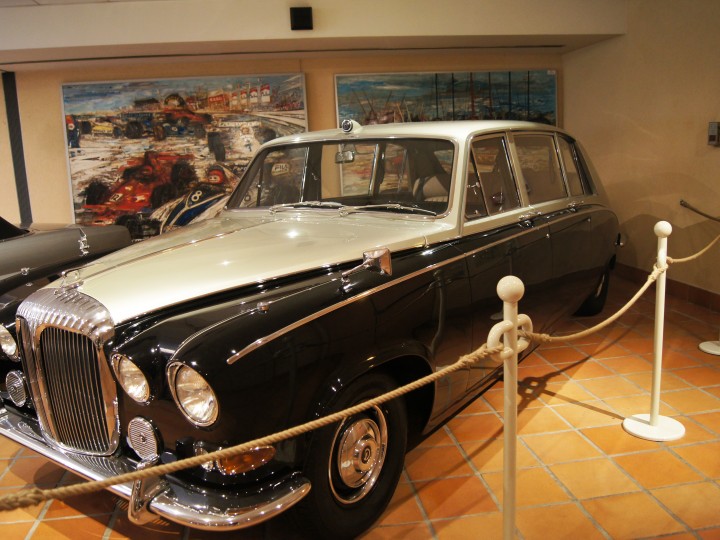1970 Daimler DS 420
Total production: 4141 pcs.
Engine: 6-cylinder in-line DOHC Jaguar
Displacement: 4235 сс
Maximum speed: 160 km / h
The Daimler limousine DS420, popularly known as the Daimler Limousine, is a large limousine produced by The Daimler Company Limited between 1968 and 1992. The vehicles are used extensively as official state cars in several countries, including by the British, Danish and Swedish royal houses. The car is also commonly used in the funeral and hotel trades.
The DS420 began production in 1968, replacing the DR450 which had been based on the Majestic Major. Unlike its predecessor, it had no Daimler engineering, but was entirely a Jaguar product, utilising the 4.2 litre version of the Jaguar XK straight-six engine. It also replaced the Vanden Plas 4-Litre Princess Limousine, and was initially produced at the Vanden Plas works in Kingsbury, North London. It was announced on 11 June 1968.
The Limousine was based on the floorpan of Jaguar's 420G flagship (not to be confused with the smaller Jaguar 420), but with a wheelbase extended an extra 21 in (533.4 mm). The frontal styling was similar to the original Daimler Sovereign, with the Jaguar four-headlight treatment first seen on the 420G's predecessor, the Mark X, mated to a Daimler radiator grill bearing the traditional fluting. Jaguar Mark X/420G underpinnings were also apparent from the twin ten gallon fuel tanks set in each of the rear wings, each with its own electric SU pump selected by a dashboard mounted switch.
The driver sat on a full width bench seat in a relatively upright position which was said to make length-wise adjustment for different sizes of driver unnecessary, although there was 2.75 in (7 cm) of telescopic adjustment available on the low-set steering wheel.
The passengers sat on a bench-seat behind the glass division in opulent comfort — the DS420's rear seat spanning over 6 feet (1.8 m) in width. The dimensions of the vehicle are very similar to those of the Rolls-Royce Phantom VI with which the limousine was designed to compete, although the Daimler significantly undercut the Rolls-Royce on price.
The top speed available from this 245 bhp (183 kW), three speed automatic, independently suspended, four wheel disc braked Daimler limousine was 110 mph (176 km/h). Undercutting the Phantom VI in price by 50% or more, the big Daimler was considered to be a fine vehicle for the cost with its Le Mans-winning Jaguar engine, the last car to use it, and bespoke construction.











